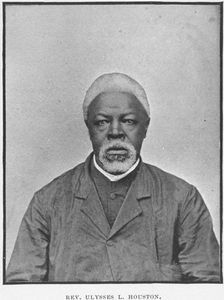When Northern missionaries, many Baptists, in 1863 onward arrived in the South to work among freedmen, they oftentimes found black congregations led by licensed, and in some cases ordained, preachers. This was especially true in Savannah, where the First African Baptist Church and Third African Baptist Church, both among the older black Baptist churches in America, were faring quite well. In such cases, the missionaries set about helping churches affiliate with denominational entities.
In addition, Northern missionaries discovered, in the months following the war, that some rural black congregations were led by preachers conducting regular religious services. Rural preachers did not typically have the education or licensing and ordination as did many city preachers, but were devoted to their congregations.
Of these rural preachers, Chaplain Henry M. Turner of the 1st Regiment of U.S. Colored Troops, stationed on Roanoke Island, says of the numerous Baptists among freedmen, that they “are not disposed to claim relations to an organized body whatever, but are simply Baptists.” They even “baptize and marry with as much boldness as if properly authorized.”
In a large number of instances, however, Northern missionaries discover that many black congregations, having no preacher, are more an unorganized group of believers than a church in any formal sense. Along the South Carolina coast, were many tens of thousands of slaves tended large plantations prior to the war, black Christians appropriated formerly white church buildings with, often, little discernment as to the denominational provenance of the structure
With the war now over, in many instances black Baptists are yet occupying church meeting houses originally owned by their former masters and other whites. Already, however, white Baptists (as are white citizens of other denominations) are turning to legal means to extricate the freedmen occupants from the structures. And in legal battles, lesser educated freedmen stand little chance of winning.
Being “simply Baptist,” in short, is not usually enough to protect black Baptists from already resurgent white Baptists of the South.
Sources: Christian Recorder, July 1, 1865; William E. Montgomery, Under Their Own Vine and Fig Tree: The African-American Church in the South, 1865-1900, Louisiana State University Press, 1993, pp. 85-93 (link)



